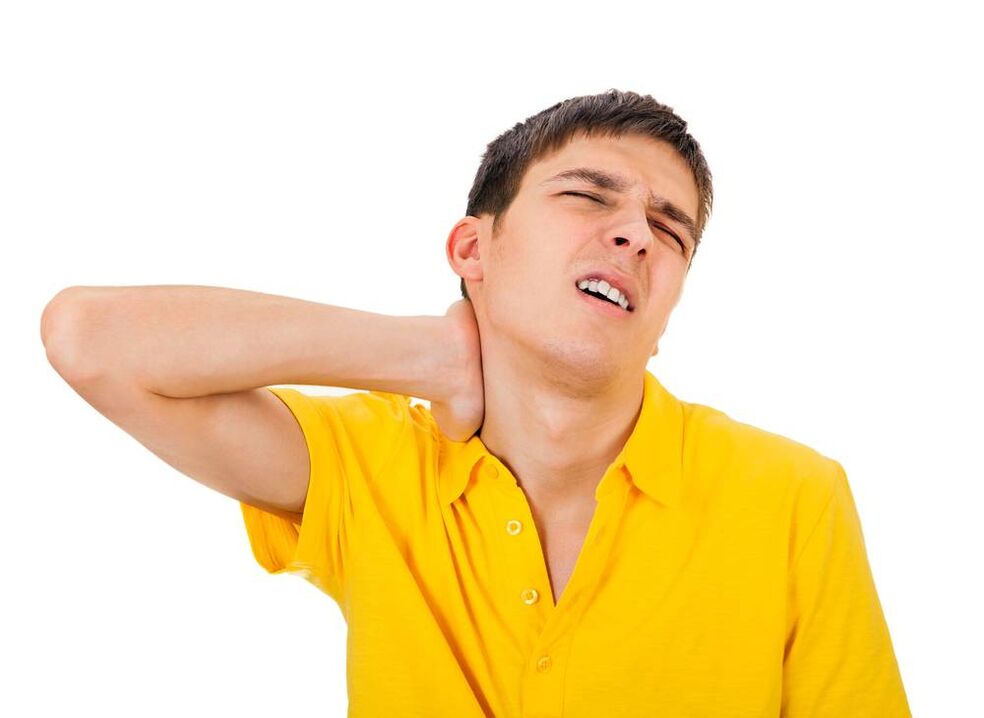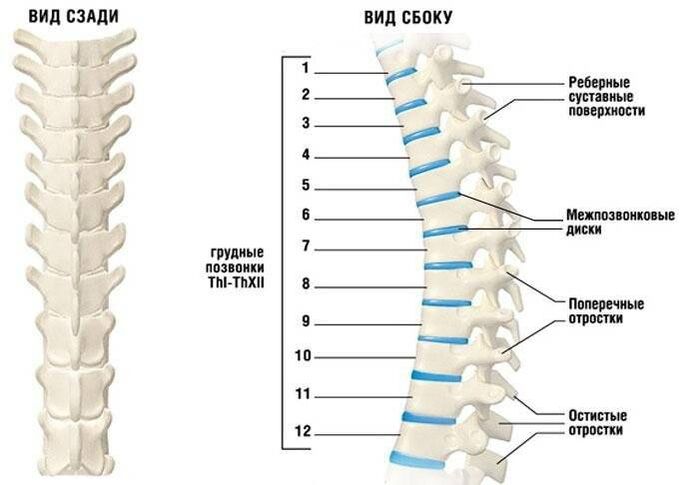Currently, according to medical statistics, almost all people over 25-30 years are complaining about the symptoms of cervical osteochondrication.The disease affects this spine more often than others.Pathology is a progressive degenerative process that affects intervertebral discs and vertebrae on the throat.The disease is common between men and women the same.It is a dangerous and complex form of osteochondicism, as the large blood vessels that provide the brain and a large number of nerve depletes are found in the throat.Violations of injection and blood flow lead to the deterioration of the brain in oxygen and nutrients.

Signs of the disease
Symptoms of cervical spine osteochondry are more severe than in other parts of the spine, even with minor damage.This is due to the fact that on the throat the vertebrae are close to each other and the intervertebral discs are low.Such anatomical feature contributes to the fact that with osteochondria, nerve endings, spinal cord, blood vessels are more commonly compressed.
General symptoms:
- pain syndrome;
- weakness and reduction of sensitivity to the upper extremities.
- Limiting throat mobility.
- violations of coordination of movements;
- Frequent dizziness?
- general weakness;
- Determining the functioning of the organs of perception (listening, vision, touch, taste).
Pains are more often located in the throat, give them to the back of the head, shoulders, weapons.The upper extremities are injured if the nervous fate was stung by the damaged vertebra, which is responsible for integration.The pain in the back of the head is due to the spastic throat muscle contractions associated with the fibrous bones and a violation of blood circulation in this area.
The weakness of the hands is observed in patients if the nervous fate is involved in the pathological process that ensures the integration of the muscular structures of the upper extremities.Restoration of mobility and the characteristic crisis when the neck rotates or slope occurs if bone growth occur in the cervical vertebrae, the height of the intervertebral discs decreases, the joints between the vertebrae are affected.
The throat vertebrae have transverse processes that form a channel in which the artery that supplies the brain runs.With the cervical spine osteochondria, the vertebrae are displaced, the connective tissue increases on them.This leads to the compression of the cervical artery, a deterioration of blood supply to the cerebellum and back of the brain.As a result, a person has frequent dizziness, coordination of movements, general weakness is disturbed.In advanced cases, if the artery is involved in the pathological process or pushes severely, then the supply of cerebellum blood, the occipital part and the brain stem worse.In this case, the functionality of the hearing and vision organs is reduced, the numbness of the tongue and fingers decreases.
The signs of the disease depend on which of the eight vertebrae is influenced by a dystrophic or inflammatory process.Disorders of sensitivity and movement lead to damage to cerebrospinal roots in which some vertebrae affects.Depending on this, the following manifestations of cervical osteochondrication are observed:

- The first vertebra - the throat and the occipital part of the head is numbness, their sensitivity decreases.
- The second - crown pain and the neck is felt.
- The third pain is felt and the sensitivity is reduced to this part of the neck where the compressed spine of the spine is located, the intensity of the taste sensations is reduced and there are disorders of the speech.
- The fourth - pain radiates on the shoulder, shoulder blade, the patient is disturbed by heart pain, respiratory disorders and the tone of the throat muscles decreases.
- Fifth - the pain is observed in the throat, given on the outer surface of the shoulder.
- The sixth pain in the throat is radiated in the shoulder blade, which feels in the forearm and thumbs.
- Seventh - the pain is given to the shoulder, the back of the shoulder, the forearm and the fingers (from the second to the fourth).
- The eighth - the pain spreads from the neck to the shoulders, arms and the little finger.
Depending on the prevalence of the lesion, four degrees of cervical spine osteochondicism differ.This is not the stage of the disease, but the severity of the symptoms, due to how common the pathological process is, what vertebrae affects.
- In the first degree, clinical symptoms are absent or manifested.Patients complain about slight pain, intensifying during head movements.The treatment that started at this stage of the disease will be effective.However, people often ignore annoying symptoms or do not feel them, so they do not consult a doctor.
- The deterioration of the pathological process enhances symptoms.In the second stage, the pain becomes more intense, it gives the upper extremities, shoulders.At this stage in the development of the degenerative process, the height of the intervertebral disc is reduced, resulting in the nerve fiber.This becomes the cause of increasing pain.The second degree of cervical osteochondicity is characterized by the appearance of headaches, a deterioration of well -being, a decrease in working ability.
- The third degree of cervical osteochondicity is distinguished by the formation of a hernia of the affected intervertebral disc.Neck mobility is limited, with palpation the patient feels severe pain.With this spread of the pathological process, the pain becomes constant, radiating to the upper extremities.The trend of the muscles associated with occipital bones becomes noticeable.Patients complain about frequent dizziness, general weakness, numbness.
- The fourth degree of cervical osteochondicity is diagnosed when the intervertebral disc is completely destroyed by a dystrophic process.It was replaced by fibrous tissue, which leads to a significant limitation of mobility.The spinal cord and blood vessels flying on the throat are affected.Such changes are characterized by a significant deterioration of blood supply to the cerebellum and fibrin of the brain.Starring of oxygen leads to a violation of movement coordination, hearing weakening, vision, language, speech disorders.
Treatment methods
Timely search for a doctor when the first alarming symptoms appear, unpleasant throat sensations, the reaction from the nervous system will prevent the evolution of degenerative changes.The treatment of cervical osteochondrication consists of a cluster of therapeutic measures.Between them:
- taking medicines;
- massage;
- Physiotherapy Physical Education.
- Physiotherapeutic procedures.
Pharmaceutical treatment
Doctors prescribe anti -inflammatory drugs to reduce pain intensity, reduce the inflammatory process and inflate the nervous fate.Coaches restores the cartilage tissue with damaged cartilage on the intervertebral disc.Musorelaxants relax the throat muscles, relieve the spasm.Medicines to improve blood flow help to repeat the reduced blood supply to the brain.Vitamins B activate metabolism in nerve tissues.With severe pain, the doctor may prescribe analgesic drugs.If the patient has severe pain syndrome, then the analgesics are inserted parenterally, as the pain recedes, they move to tablets.
Physiotherapeutic methods
Physiotherapy is an effective way to combat cervical osteochondria.It is imperative to treat this disease using such techniques, after which the following results are achieved:
- Pain intensity decreases.
- The restoration of the affected bone, cartilage and muscle tissues is activated.
- Spasm and tension in the muscles are removed.
- An inflammatory process stops.
- The delivery of oxygen and nutrients to the affected area and the brain improves.
The most effective in the treatment of osteochondicism is the following types of procedures:
- Drug electrophoresis (the affected area acts by electric shock, which, in addition to activating blood flow and tissue recovery, improves the supply of drug substance to tissues affected by the degenerative process).
- Ultrasound treatment (metabolic processes in the weak area are activated, pain is reduced, inflammation stops).
- Magnetotherapy (relieves the affected area, which helps reduce pain intensity).
- Laser treatment (improves blood circulation in the pathological process, has anti -inflammatory effect).
Medical physics
Exercises are prescribed during the period when the acute manifestations of the disease stop.During gymnastics there should be no noticeable discomfort and pain.The complex should be carried out in the achievement of a persistent recession to prevent relapse.

- Take a place in the stomach, lift your head and body, leaning in your hands.The back is straight, the breathing is deep and uniform.Get in place for a minute or two, then slowly take the starting position.The number of repetitions is 3.
- The position is in the stomach, hands along the body.Slowly turn your head, trying to touch your ear on the floor.Repeat 6 times on each side.
- Sit or stand, turn your head to a inhalation, trying to get to your chin on your chest.On exhalation, take your head smoothly back, lifting your eyes to the ceiling.The number of repetitions is 10-15.
- A good exercise to strengthen the cervical muscles is to push the front against the hands pressed on it.To achieve the result, you need to press the palms on the forehead and the front on the palm of your hand for 30 seconds.Repeat three times.
- Rotate your head in a circle.Do the exercise slowly, smoothly.In each direction - 10 rotations each.The appearance of dizziness during the movements is unacceptable.If this happens, you should stop immediately.
Massage
The course is prescribed by a physician in the absence of acute pain, only a medical training specialist can conduct it.With such a disease, it is not recommended to contact non -professionals.
Therapeutic effects of the area's massage for collar:
- Blood flow and lymph node in the affected area improve.
- The muscles relax, the spasm is removed.
- Pain intensity decreases.
Surgery
The function occurs if conservative treatment does not have results within six months, the patient is tormented by severe pain, signs of damage to nerve fibers and myelopathy are observed.If the osteochondria of the cervical region proceeds with complications, there is a threat of a stroke, there is a strong spinal cord compression, then function is required.
According to indications, they resort to the following types of surgery:
- Endoscopic Disctite - Removal of part or entire intervertebral disc.
- Lainotomy - bone joints and verdant bone particles (often in combination with laminoplasty - the introduction of artificial plates for the expansion of the vertebral tube).
- Evaporation of the nucleus of the disc core - the split of the intervertebral disc core with a laser beam simultaneously with the destruction of its destroyed fragments.
- Cold -plasma nucleoplasty -instead of an endoscope, is used a long and thin hollow needle, which is inserted into the intervertebral disc, an electrode that has a cold phenomenon is delivered through it to the point of destruction.
The throat is a complex organ in which large blood vessels, the passage of the spinal cord.They are easy to hurt, so they resort to surgery in no more than 5% of cases.Surgical treatment is often accompanied by the development of complications.Between them:
- Inflammatory process in tissues or membranes of the spinal cord.
- osteomyelitis;
- Scar formation leading to narrowing of arterial and spinal canals.
Work on the cervical spine is complex and require a long rehabilitation period.The patient's recovery after surgery lasts six months or more.
Prevention
In order to avoid the development of cervical osteochondicism, it is necessary:
- Watch the position of the spine and throat.
- Drive an active lifestyle, move more.
- When doing physical exercises, it is necessary to be careful, observe the correctness of execution, and even minor injuries can affect the condition of the musculoskeletal system.
- Take care of the correct position of the body during sleep, buy an orthopedic or anatomical layer.
- Properly equip a workplace where a person spends a lot of time.
- They are regularly dealing with physical culture.
- Monitor the diet, ensure that all useful minerals needed for the bone fortress, especially magnesium and calcium.
- They are constantly undergoing examinations for timely detection of osteochondry.
Prevention will help prevent degenerative changes in the cervical spine, protects against pain, dizziness, end numbness and other unpleasant symptoms.


















































